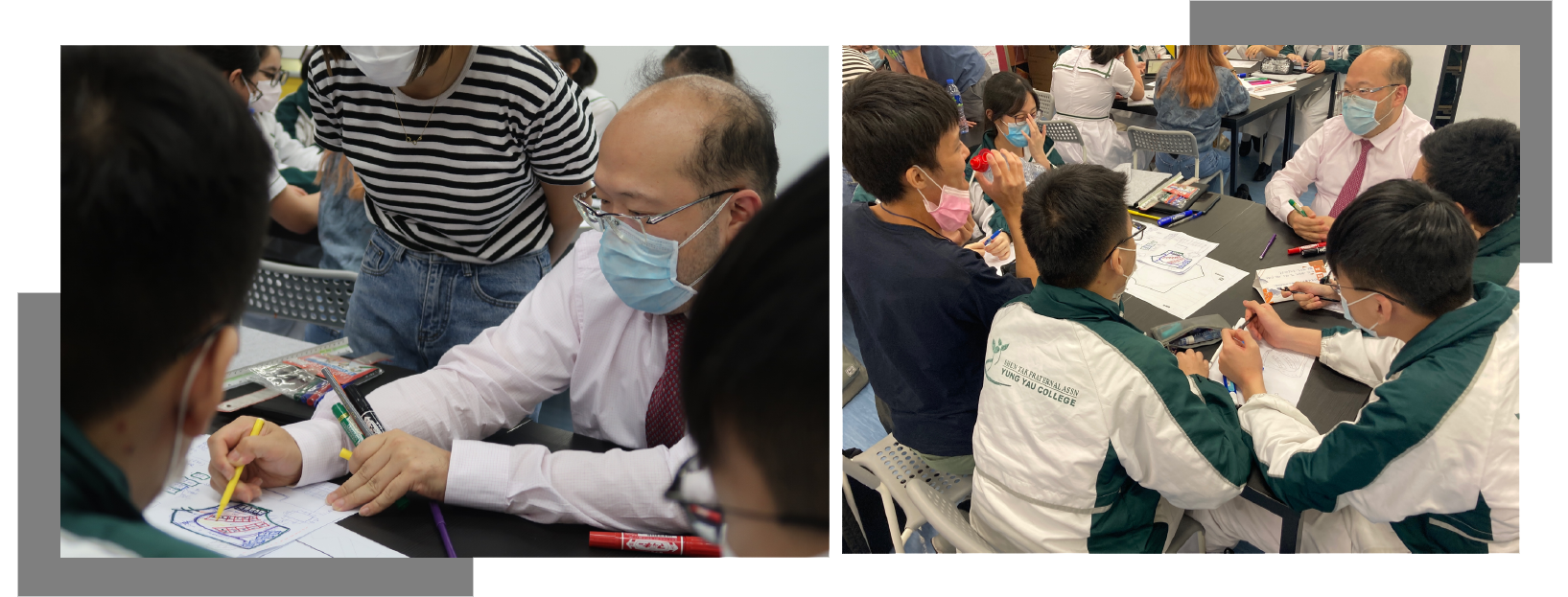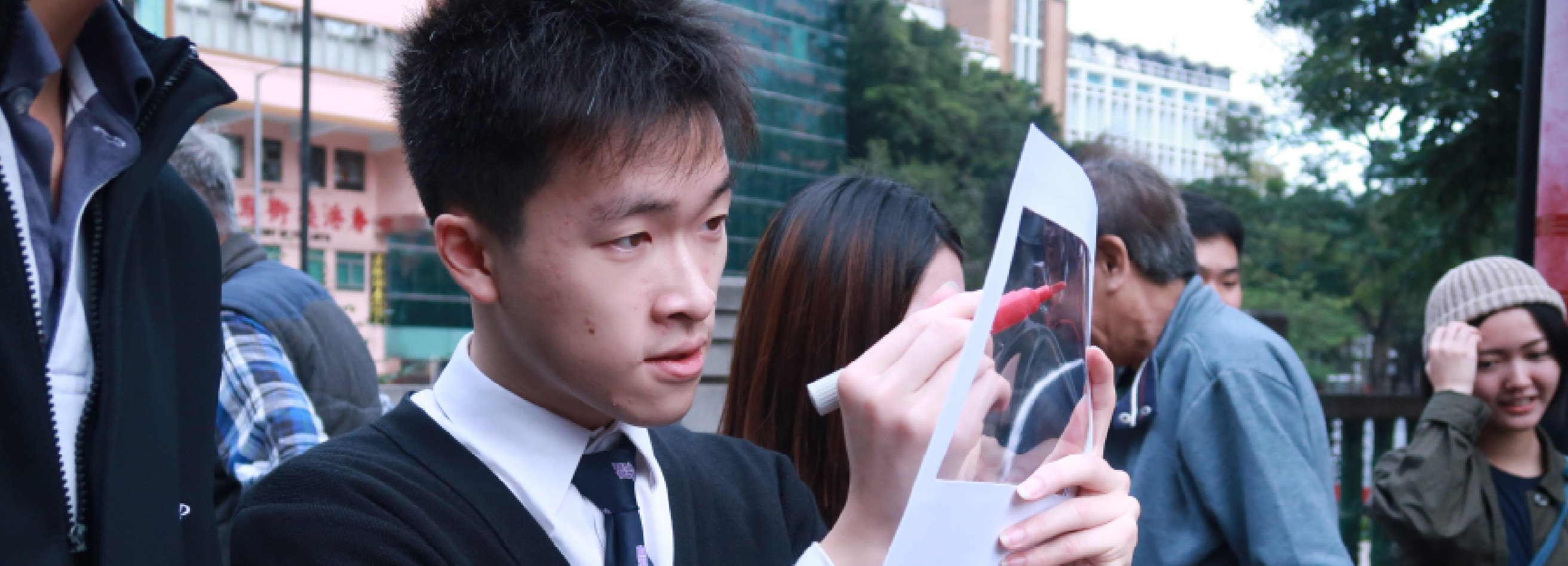Author: Mr. Yuen Kai-Lun (Assistant Principal, Shun Tak Fraternal Association Yung Yau College)
Translator: Centre for Translation Studies, Department of Chinese and Bilingual Studies, The Hong Kong Polytechnic University
Shun Tak Fraternal Association Yung Yau College is one of the ten Best Innovative Schools in Science and Technology Education. Over the years, the school has been committed to developing students' potential in science and technology innovation, and actively promoting STEM education. In this academic year, our department of mathematics and the PolyU Jockey Club Design Institute for Social Innovation have jointly promoted the integration of Design Thinking into secondary education curriculum, enabling teenagers to develop innovative solutions for different social issues with the “thinking” of “designers”.

In the theme of design thinking, students need to use the design thinking tools from a people-centred perspective to carry out interdisciplinary collaboration, and to create social innovative solutions. The theme of the project was “Redesign Tin Sau Hub”. It focuses on the collaboration among mathematics, tourism and hospitality, and geography, to encourage students to explore social issues with design thinking. Student would address the deeper needs of the communities by redesigning Tin Sau Hub through prototyping.
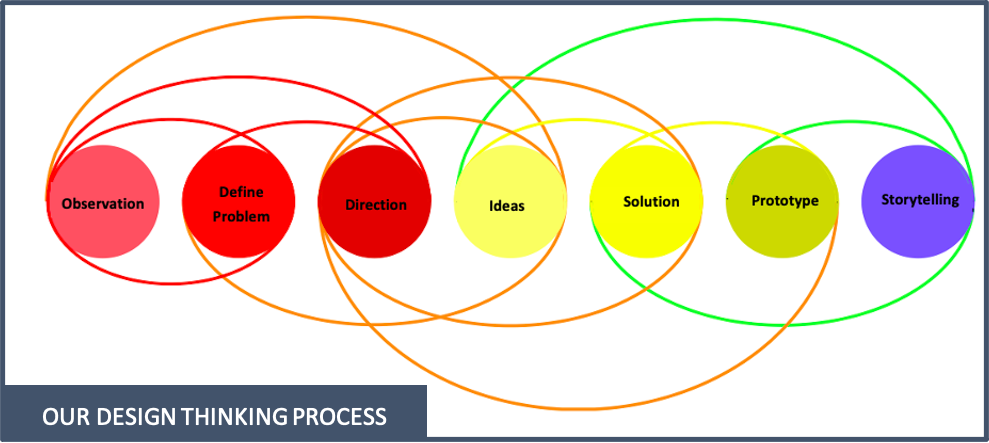
Observation
Observe Tin Sau Hub with VR Technology
Students were unable to visit the site due to the epidemic, therefore a VR tour video produced by a 360 camera was used as a teaching tool, allowing students to “enter” Tin Sau Hub for to freely “observe”. The students could acquire an in-depth understanding of the environment and details of Tin Sau Hub, even they were physically on campus. Students were able to observe Tin Sau Hub in a virtual on-site visit, to summarise the problems that merchants and residents may encounter.
“To integrate VR experience into classroom to enhance efficiency, allowing students to explore social issues and to give back to the community by guiding students to redesign Tin Sau Hub with design thinking.”
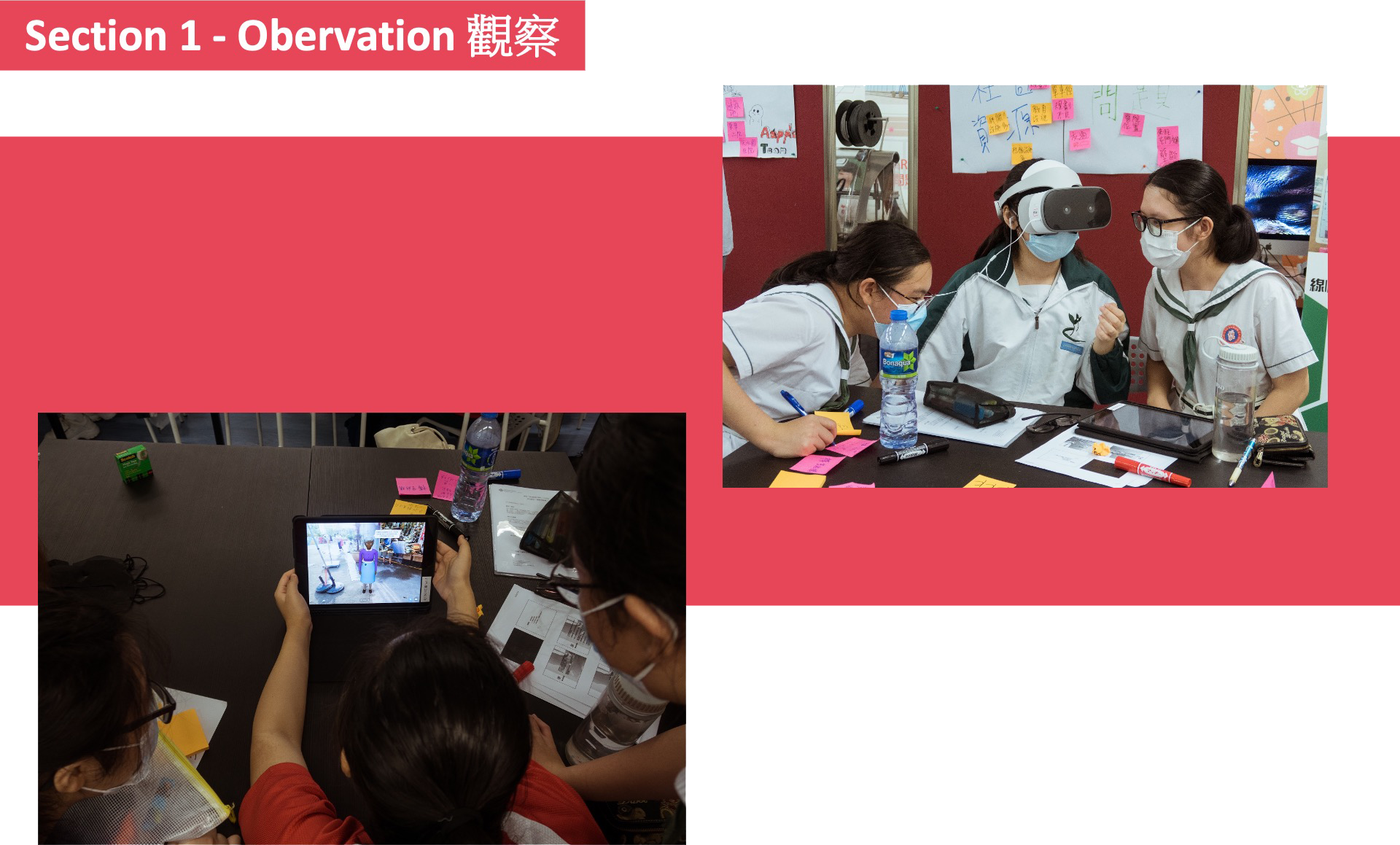
Questionnaire Design
Students have designed an effective questionnaire to interview stakeholders with observed questions. The data science concept of “statistics” in mathematics will also be applied in the collection and organisation of stakeholder data. At last, students had to analyse the data and carry out an in-depth investigation of the core problems.
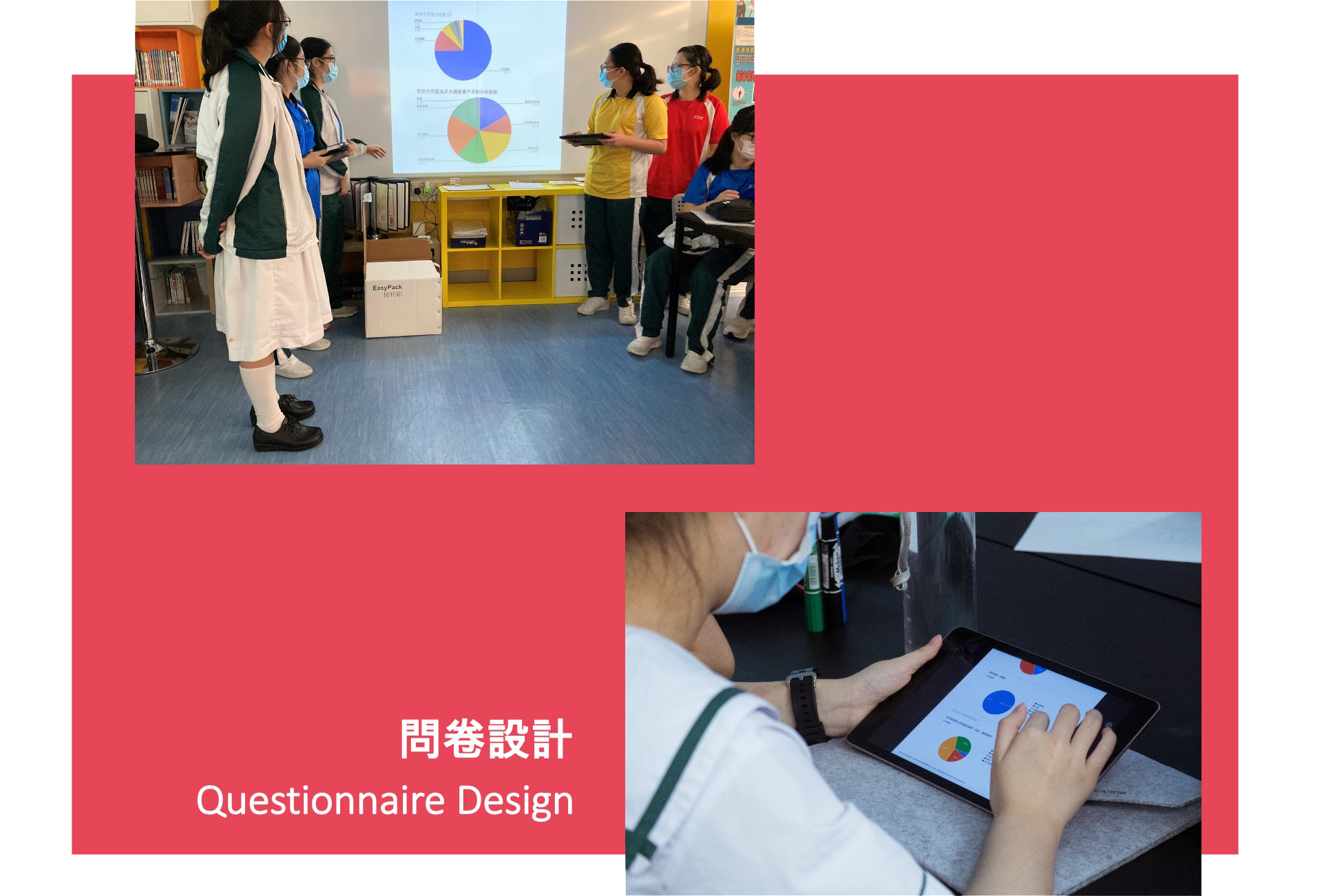 |
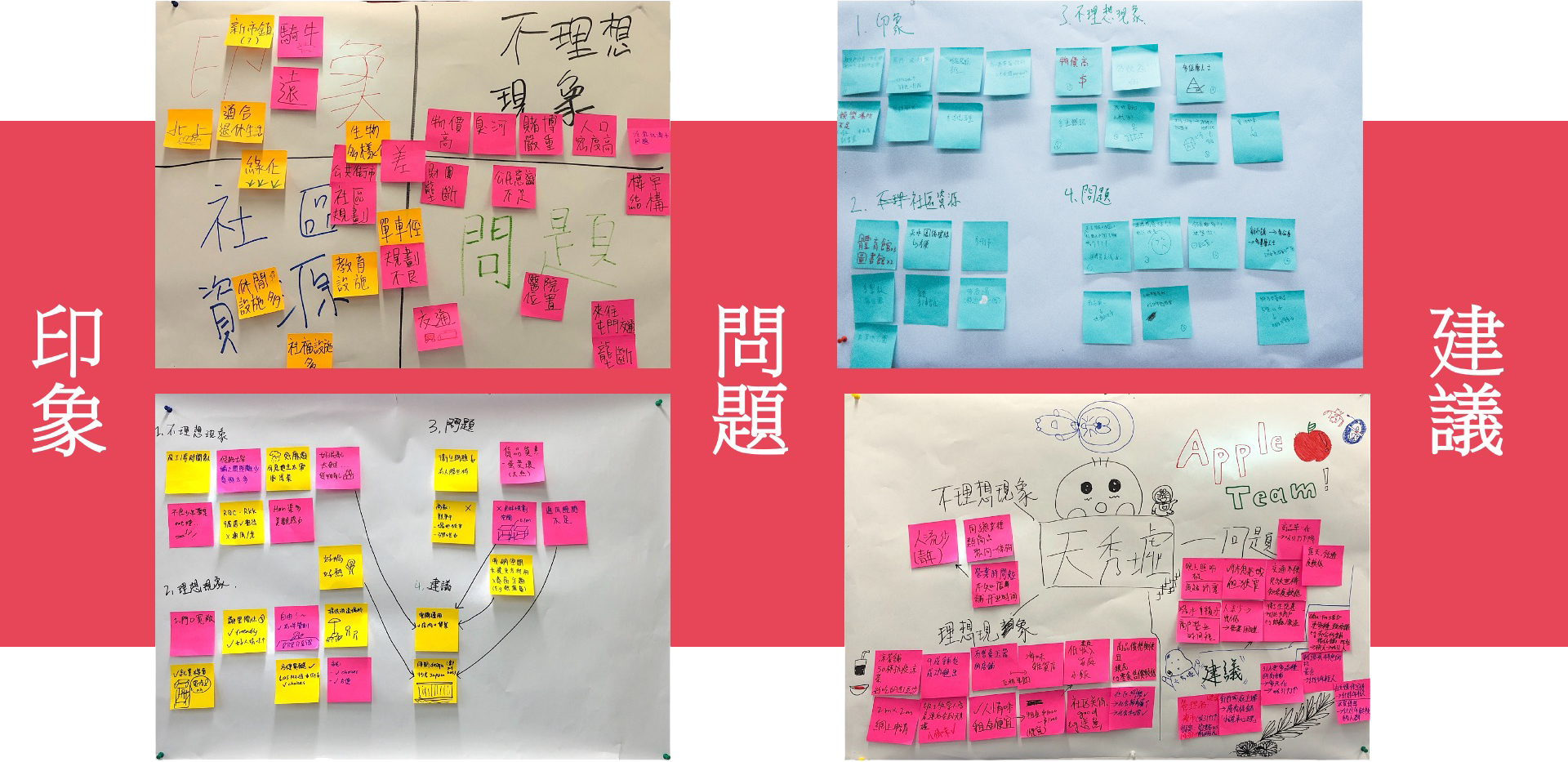 |
Define Problem
By sorting out and analysing the observed “problems” and “phenomena”, students had to focus on the core problems and their causes that need to be changed. Students had to use the concept of design thinking to analyse the “surface features” of the whole community and the “potential needs” of residents, and then build up the core concept of the whole design.
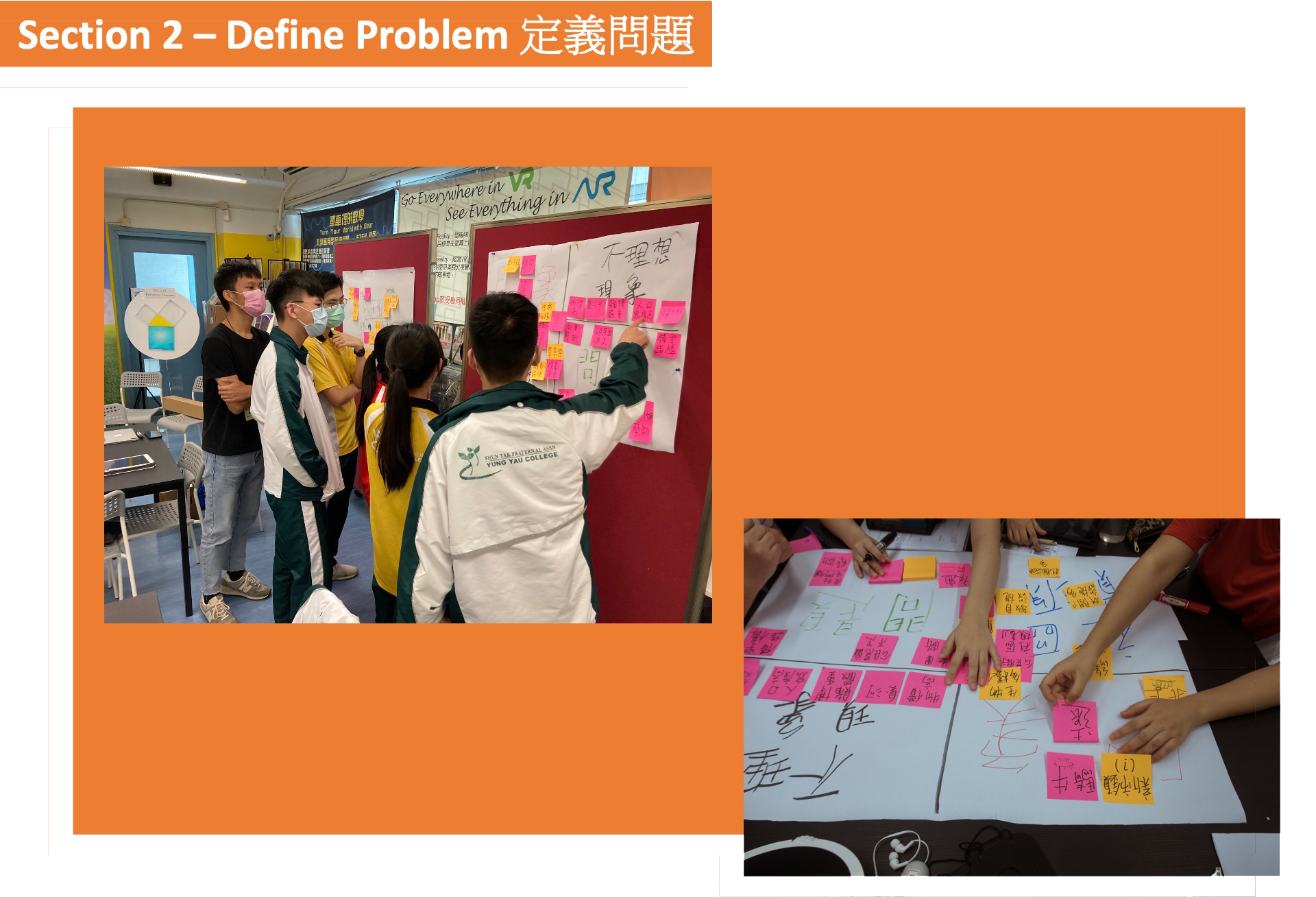
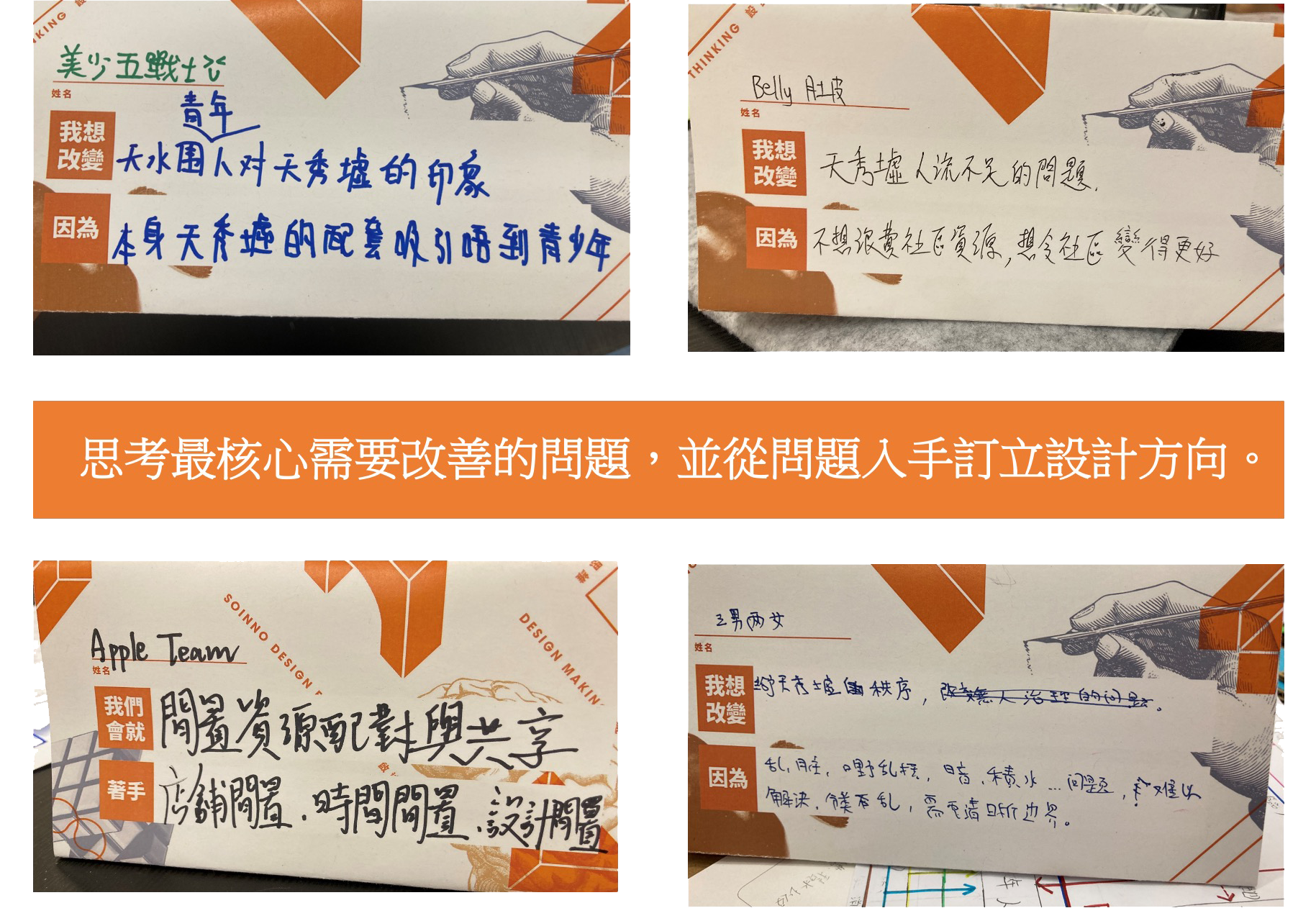
Direction
When a social problem is discovered, we will apply technological or behavioural innovations to change the interaction among different social groups. It is from such changes we can find new and innovative solutions for different social problems. Students could find a unique direction in design by understanding various social innovation ideas and innovative examples in different areas. In the case of Tin Sau Hub, students learned to integrate various social innovation ideas into the consumption pattern of the area, and prepare a report. For example, the students introduced the “time coupon” system into the market, so that consumers can become part of the resources. They also introduced a “flea market” as a new activity of the Hub. These ideas can provide features of a more customised design, fitting the future development of the society.
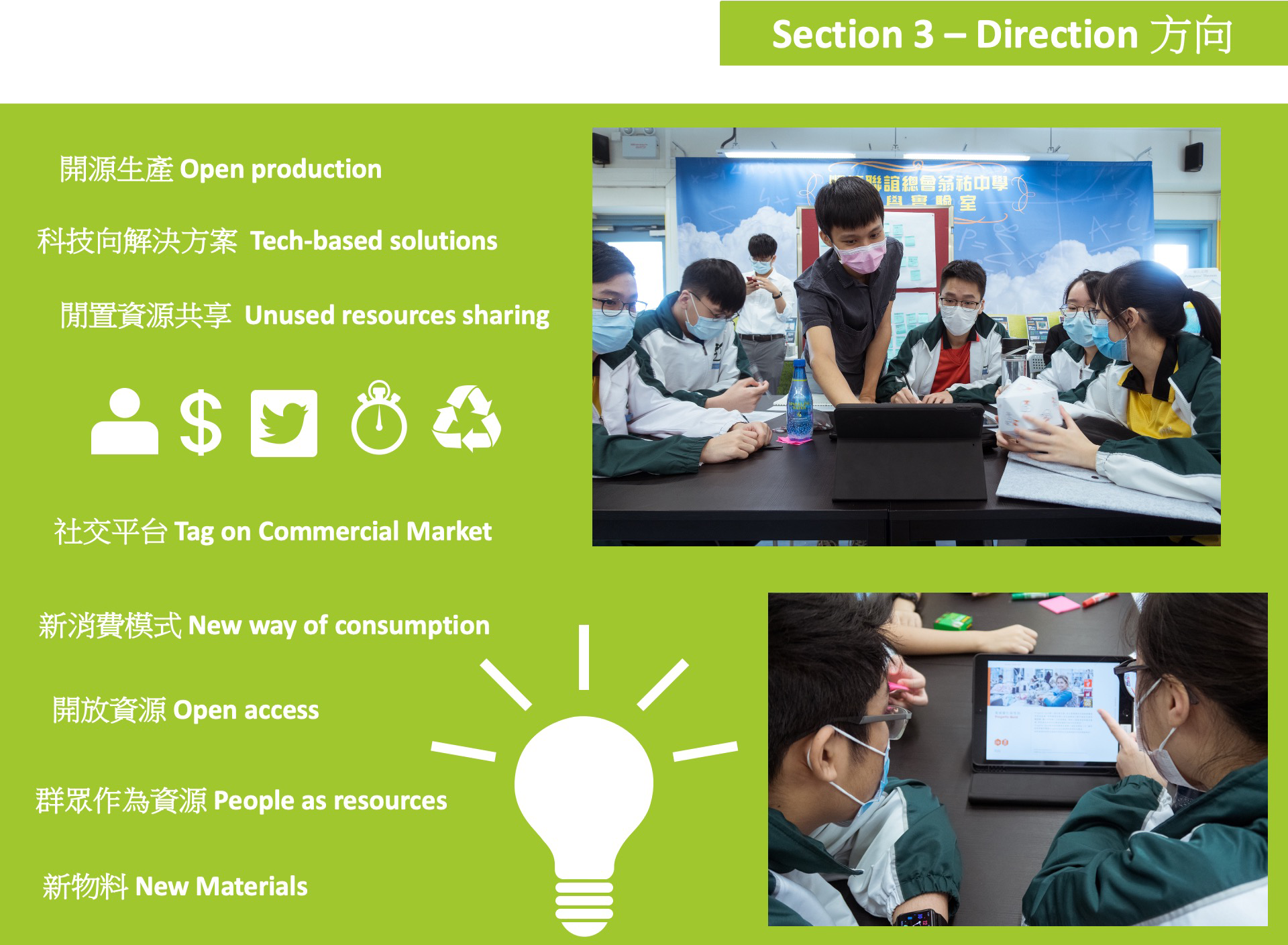
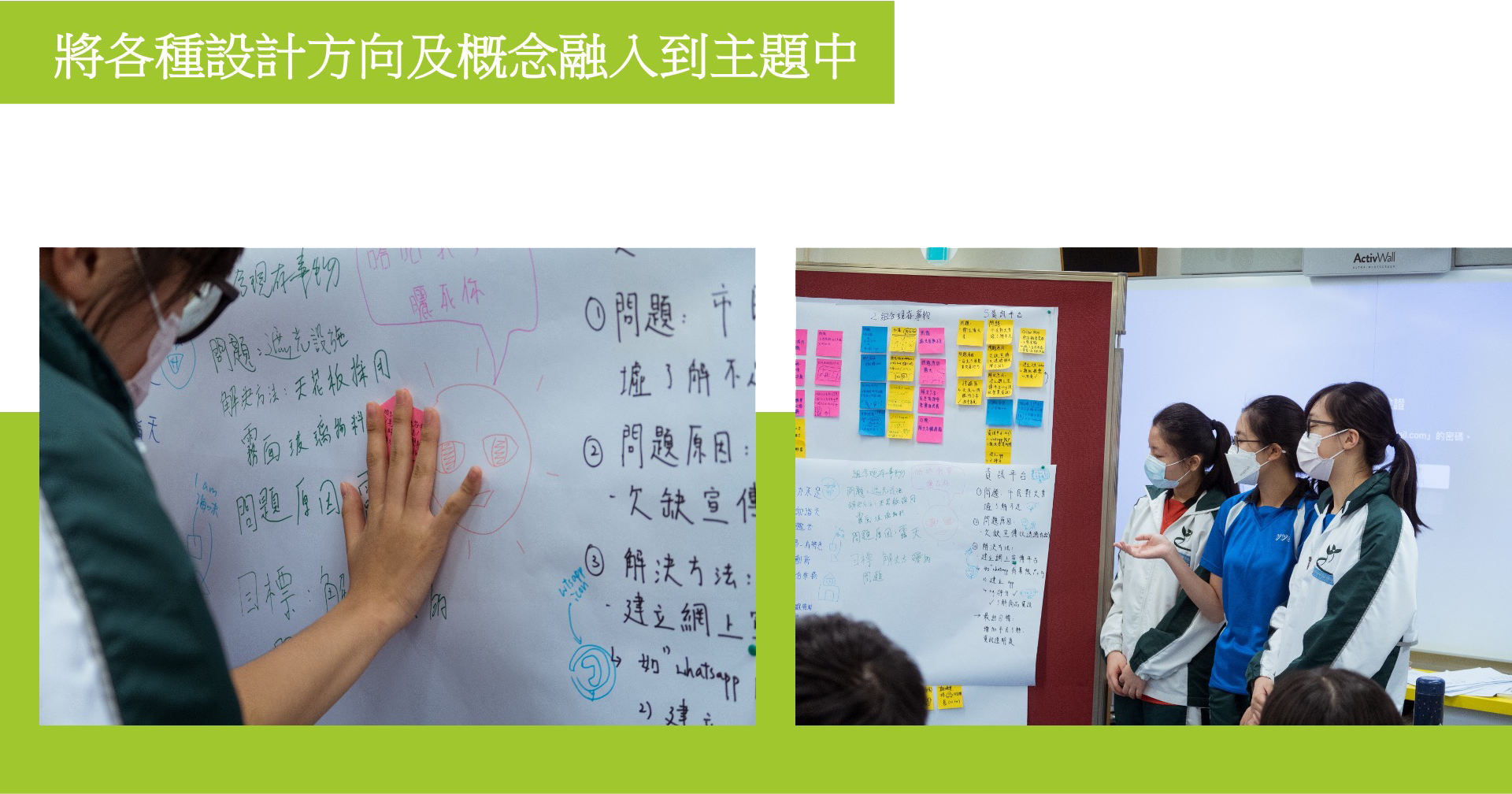
Ideas
Students could integrate the design direction and ideas with the System Map. The System Map shows all the parties involved in the service and their connections (the flows of materials, energy, information, money, documents, etc.). It can also demonstrate the connections among different service components and characters and highlight their exchange values. Our students visualized and presented their ideas by drawing the System Map. In the process, they could consider and recognise the shortcomings of their design and the difficulties in the implementation, in order to further sort out different solutions.
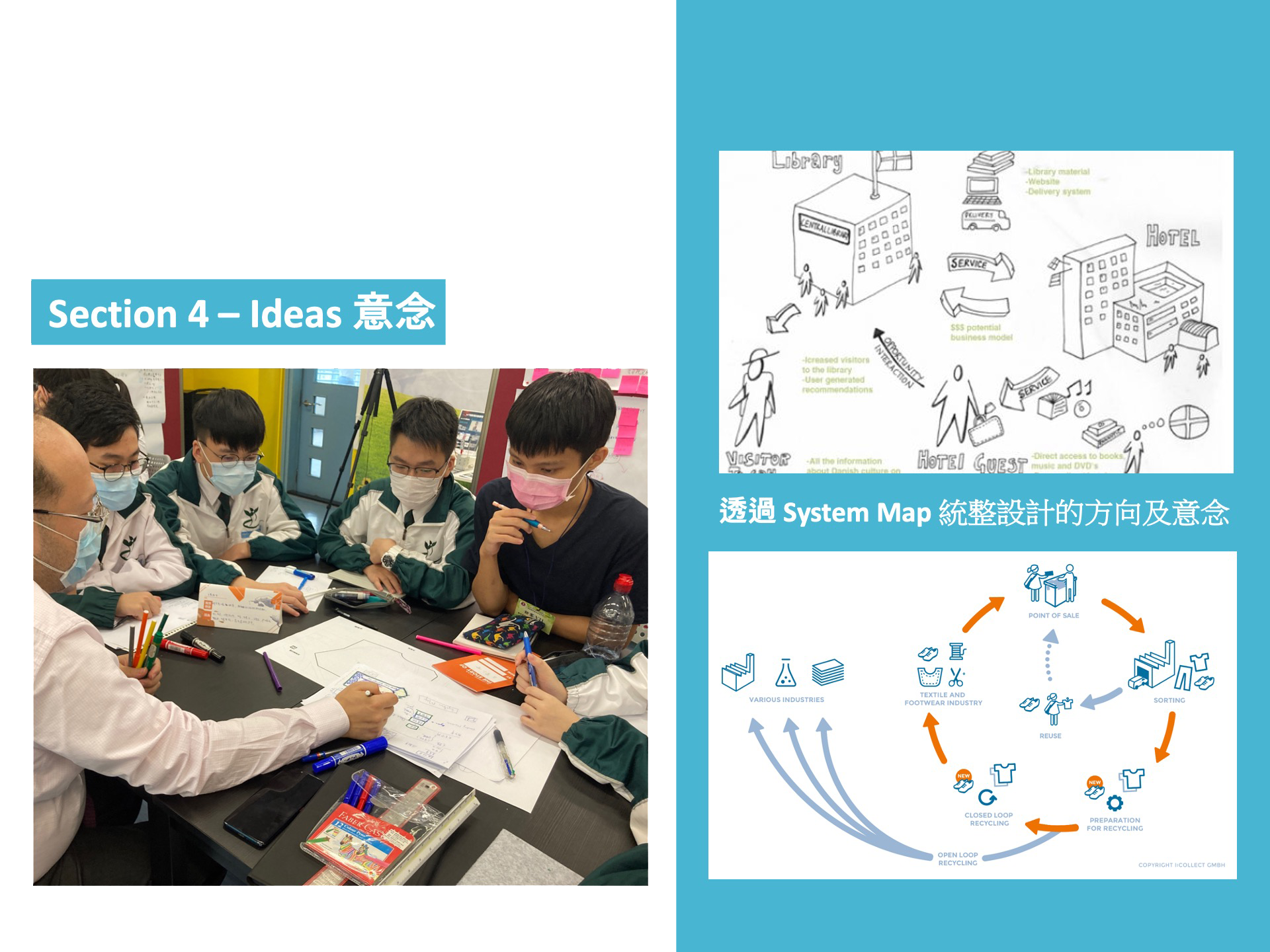
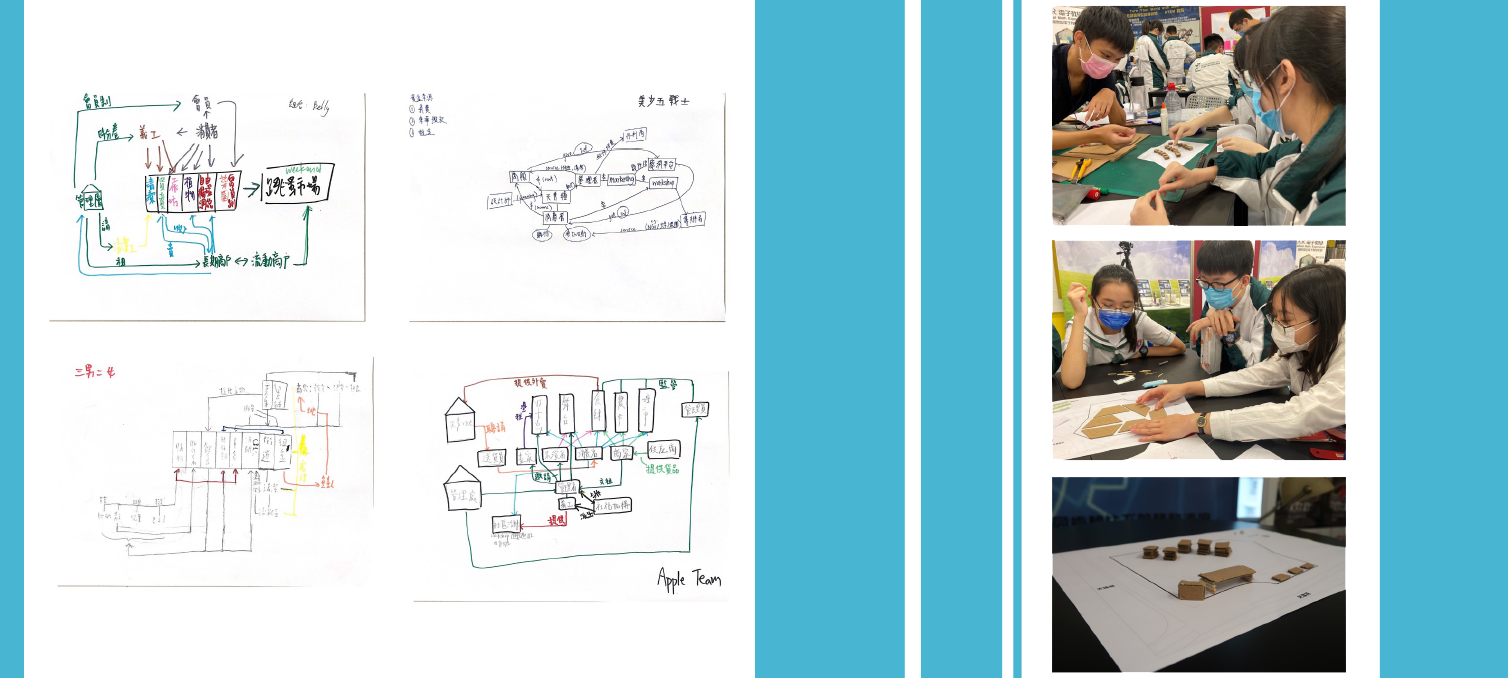
Solution
2-3 design ideas were integrated into a simple sketch or prototype and graded according to the four criteria of “urgency”, “feasibility”, “originality” and “sustainability”. The students were then able to identify the advantages and problems of each design, and think about how to fix them to create a prototype. The students could think about and reflect on whether the solutions could tackle the corresponding problems. The best design was picked for prototyping according to the gradings.
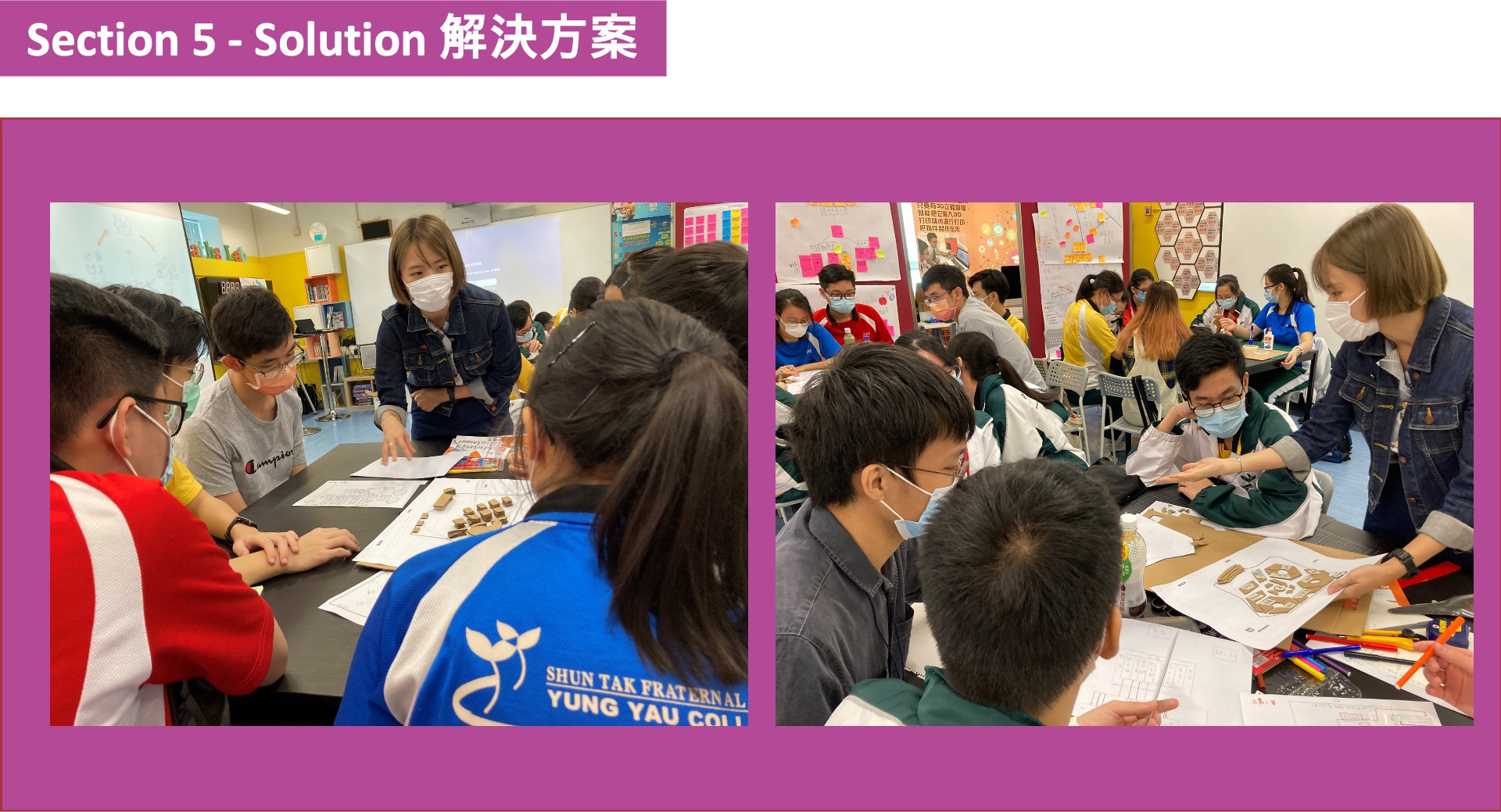
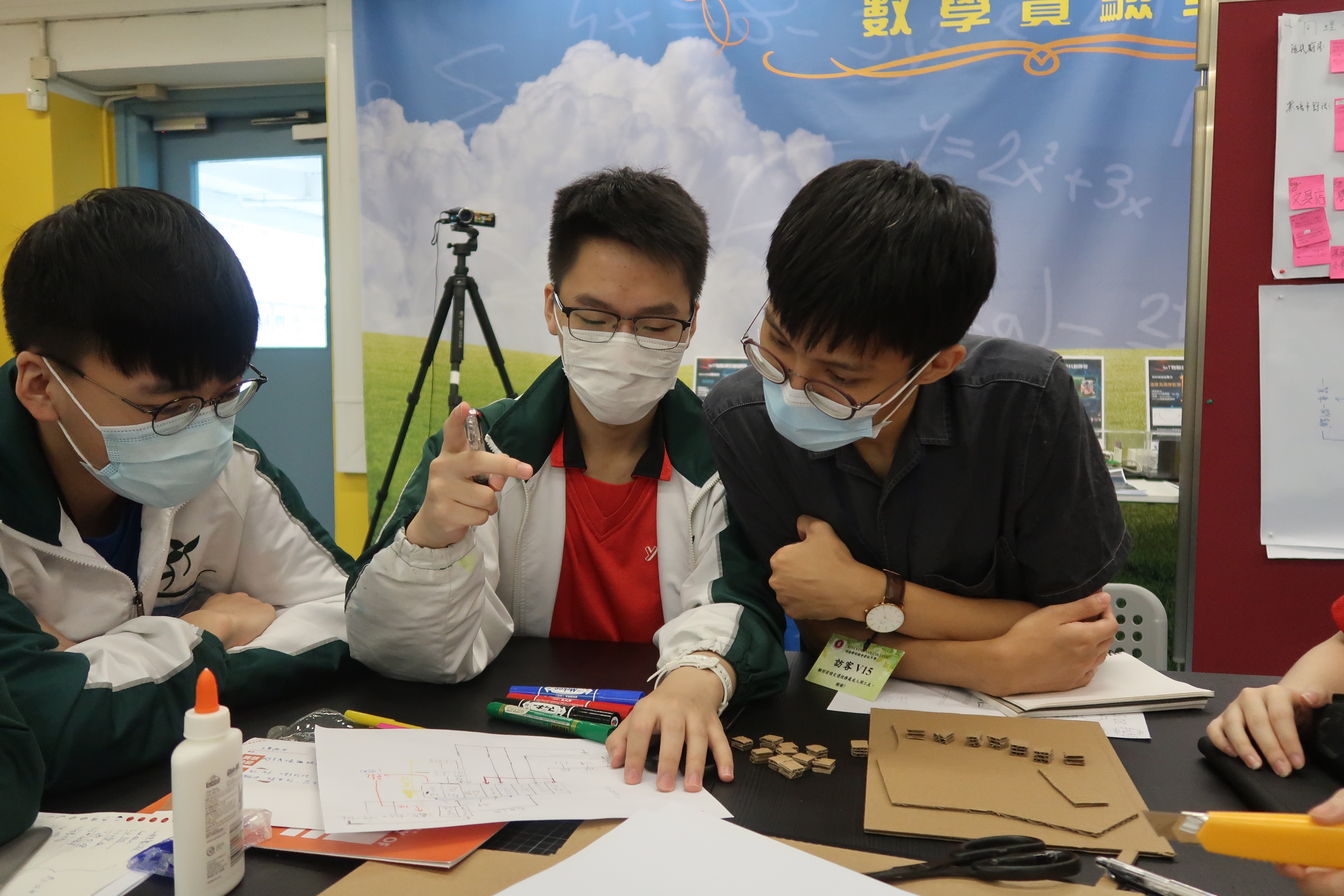 |
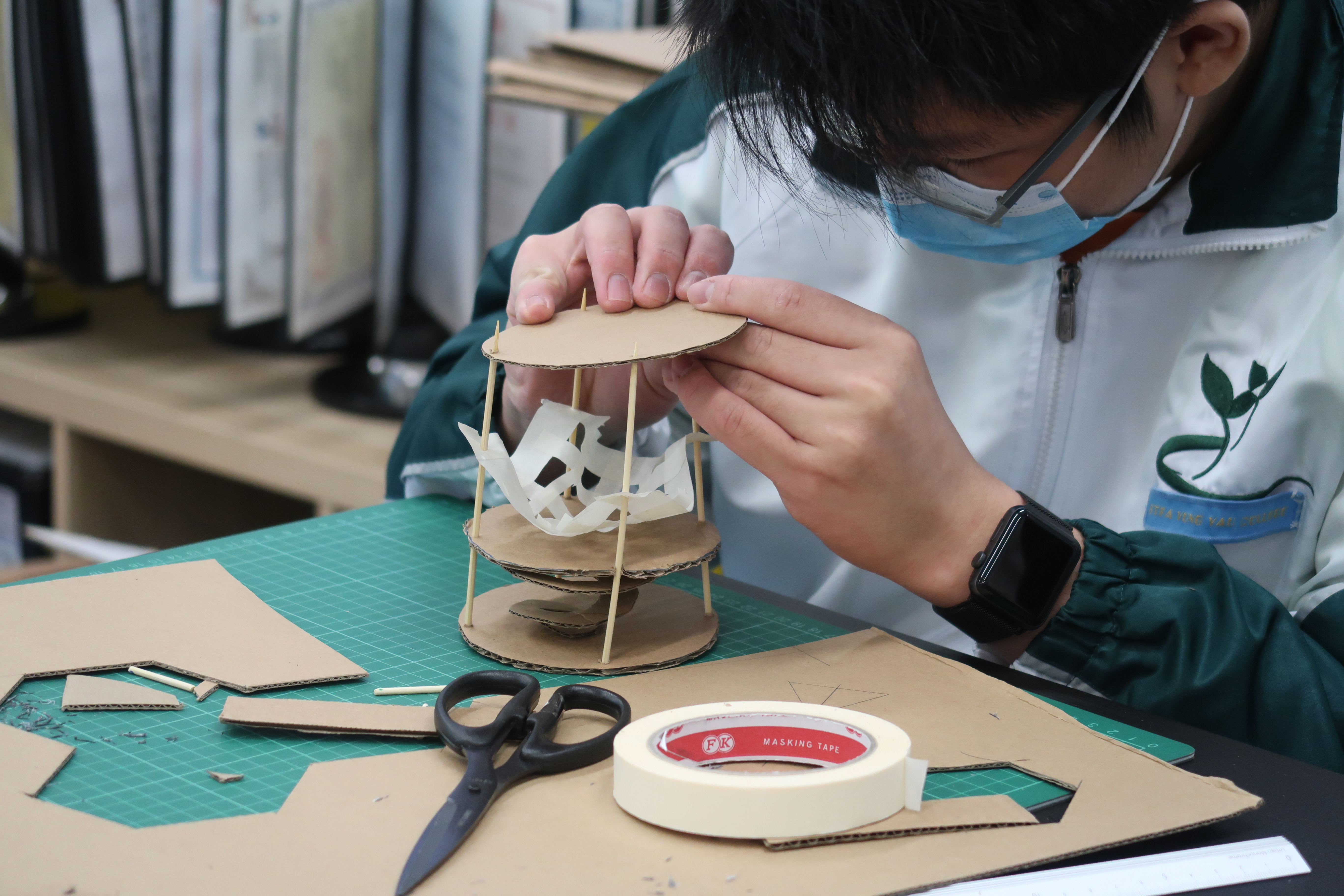 |
Prototype
Taking “problems”, “direction” and “ideas” into consideration, the students expressed their ideas in redesigned delicate prototypes.
When the process was completed, the facilitators guided the students to review every piece of detail on the “design log”. Students could then evaluate whether their designs were able to solve the “defined problems” and think about whether their design ideas and direction could be implemented.
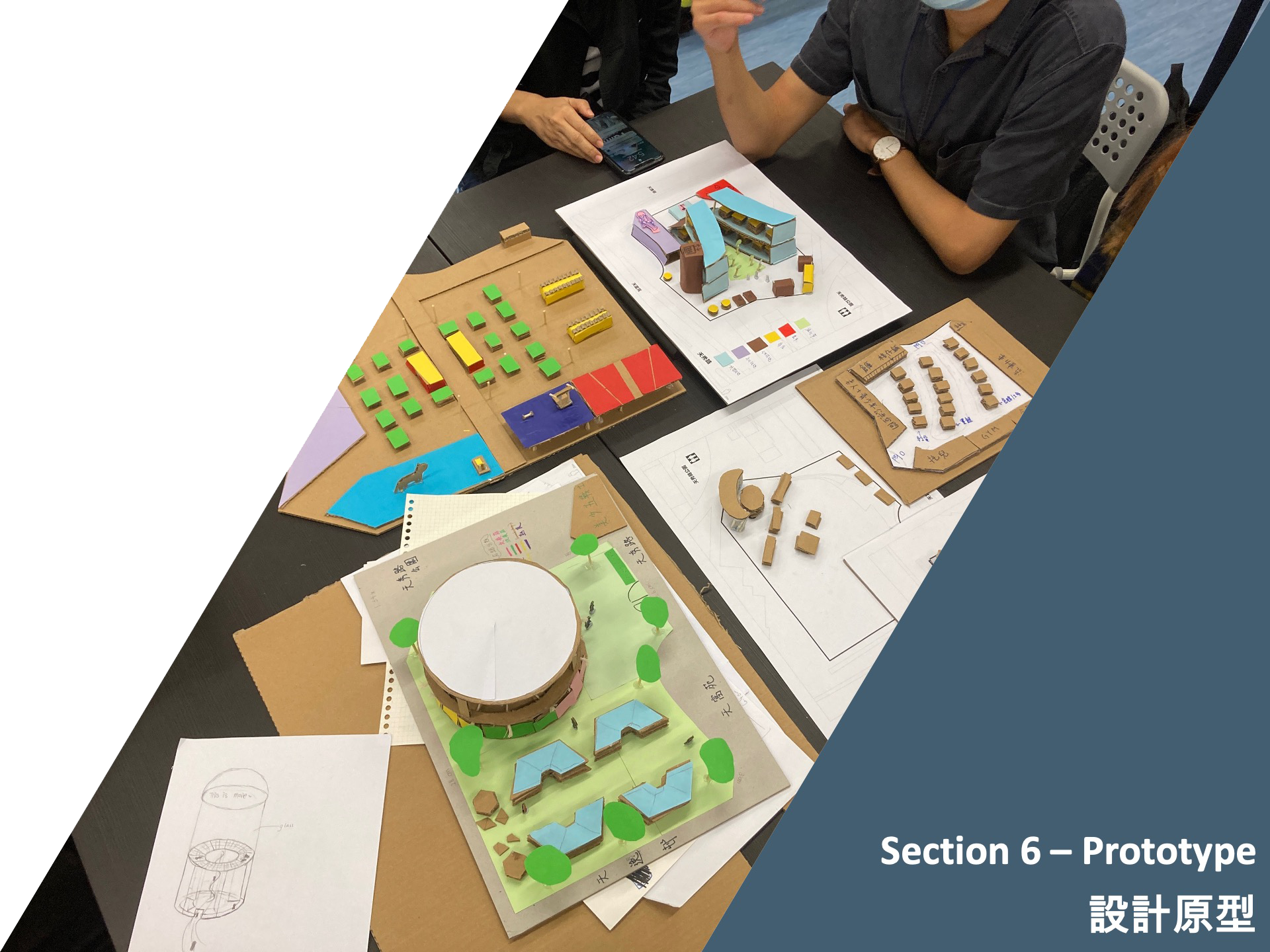
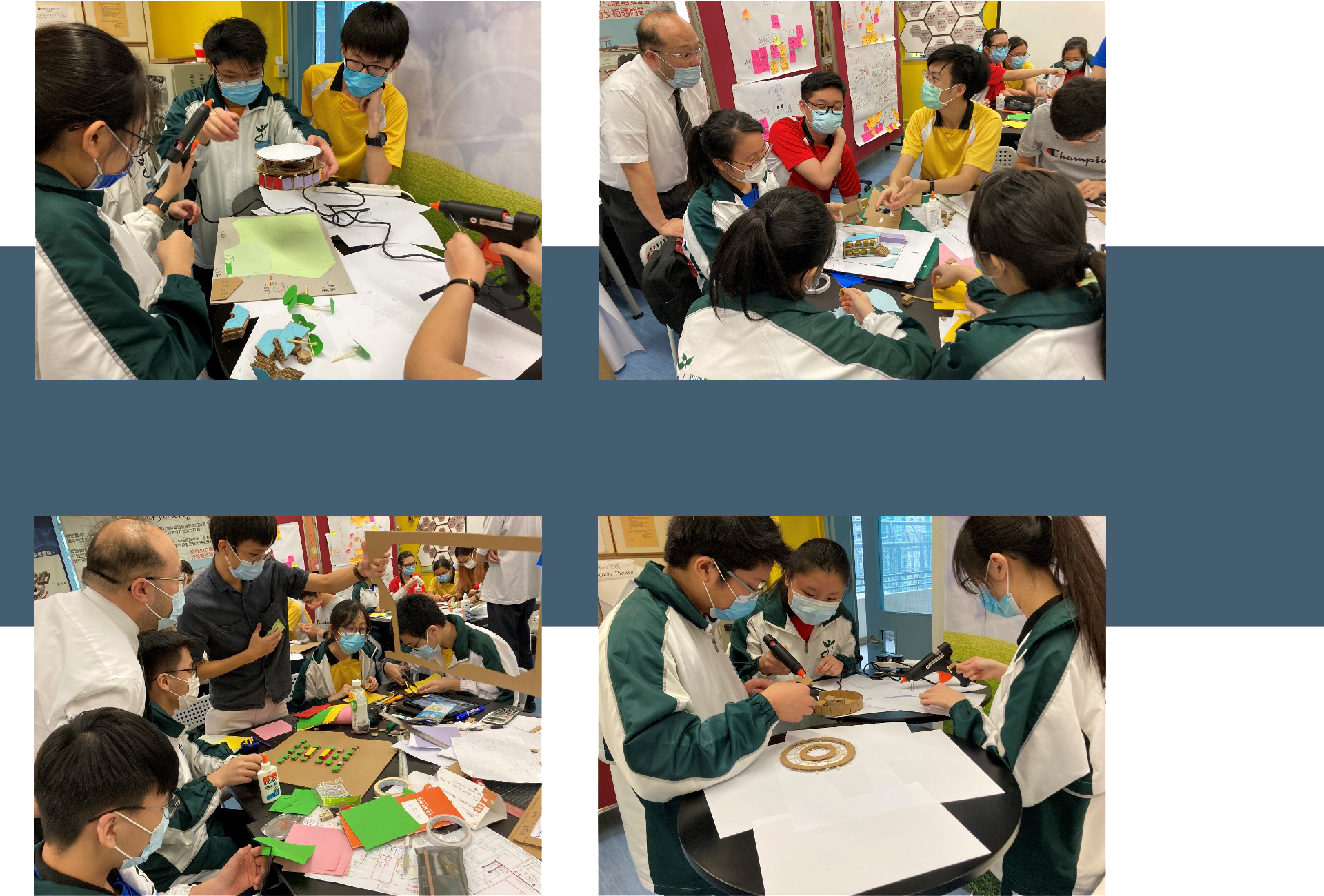 |
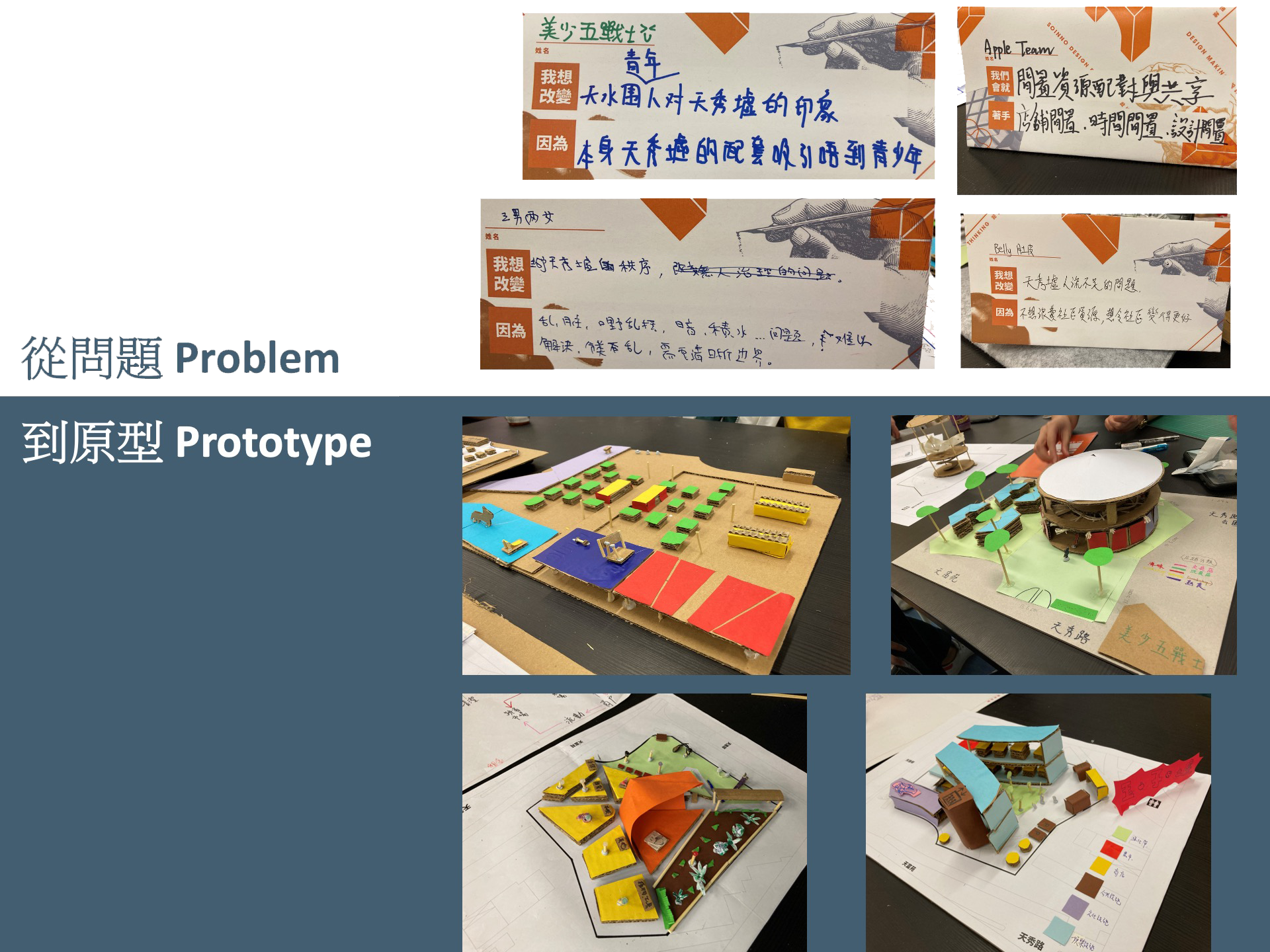 |
Storytelling
Once the prototype is finished, the design became something loaded with content. Designers have to convey the direction and concepts of the design by storytelling. The students presented the whole design to users by speeches, storyboards or videos with a storytelling approach. This can help designers to make adjustment and gradually derive better solutions. In the process of “storytelling”, students also learned how to make it easier for users to understand the ideas behind the prototype, and collect feedbacks from stakeholders for reflection.
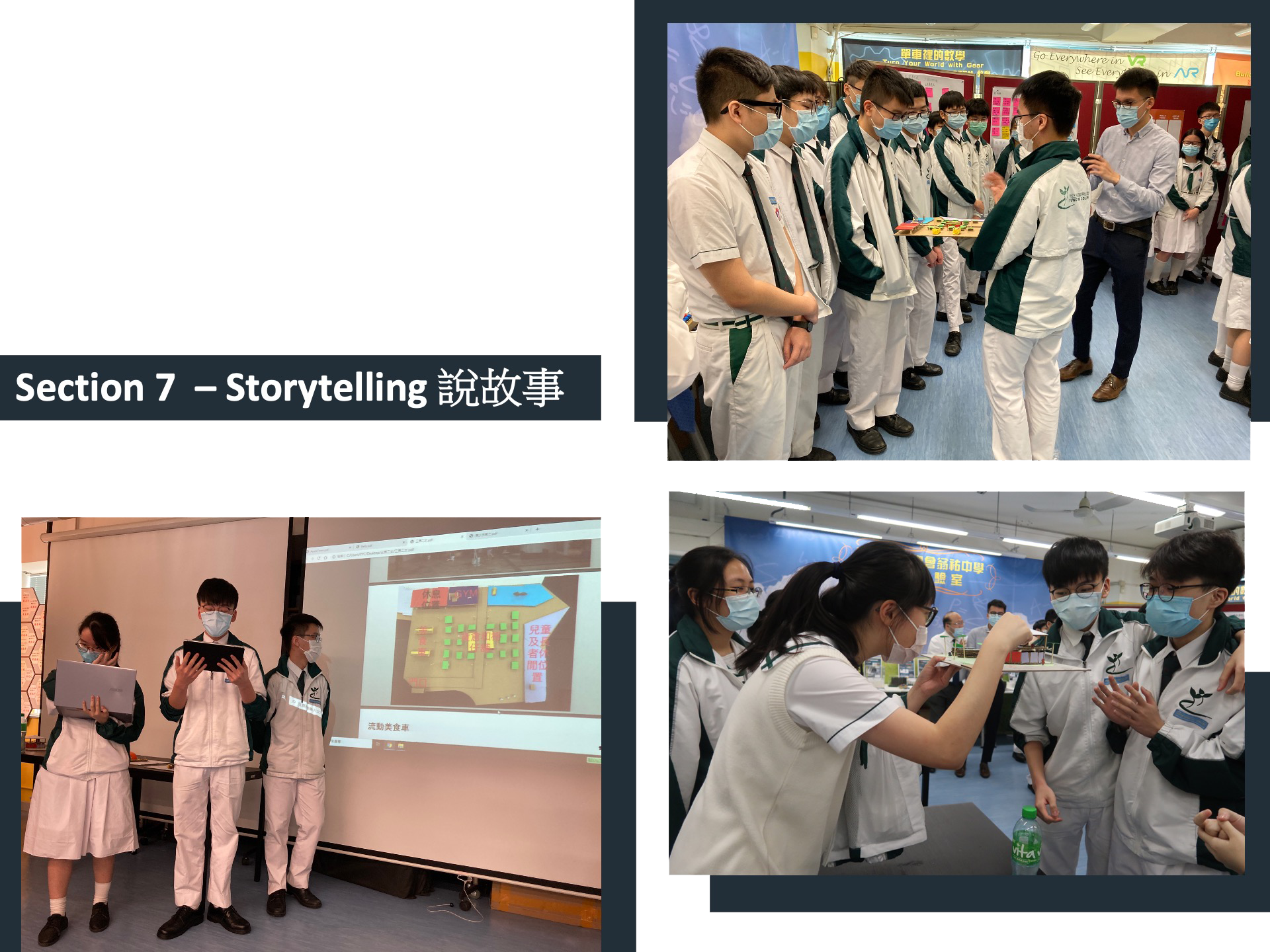
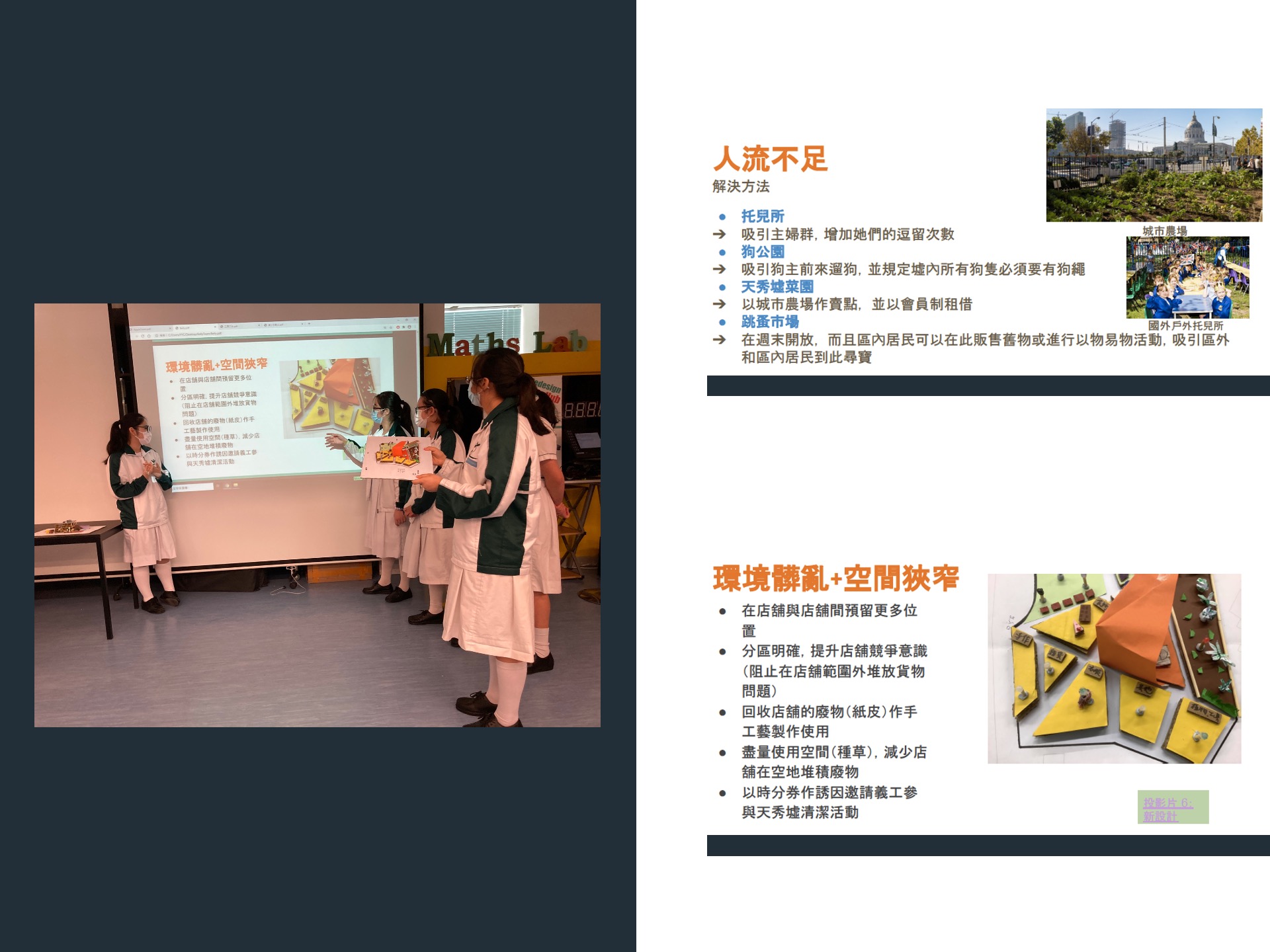
Student’s Reflection
Through this workshop, Eva was able to realise that policy, economic incentives and education are not the only directions to solve problems. There are other more innovative and interesting approaches which can make the problem-solving process more enjoyable. The workshop pushed her to further investigate the case and keep thinking. Moreover, it provided more opportunities for students to do presentation and thus sharpened their skills. Redesigning Tin Sau Hub has improved Eva’s innovative mind.
“Redesigning Tin Sau Hub has improved my presentation skills and innovative mind! ”
5B Eva Leung
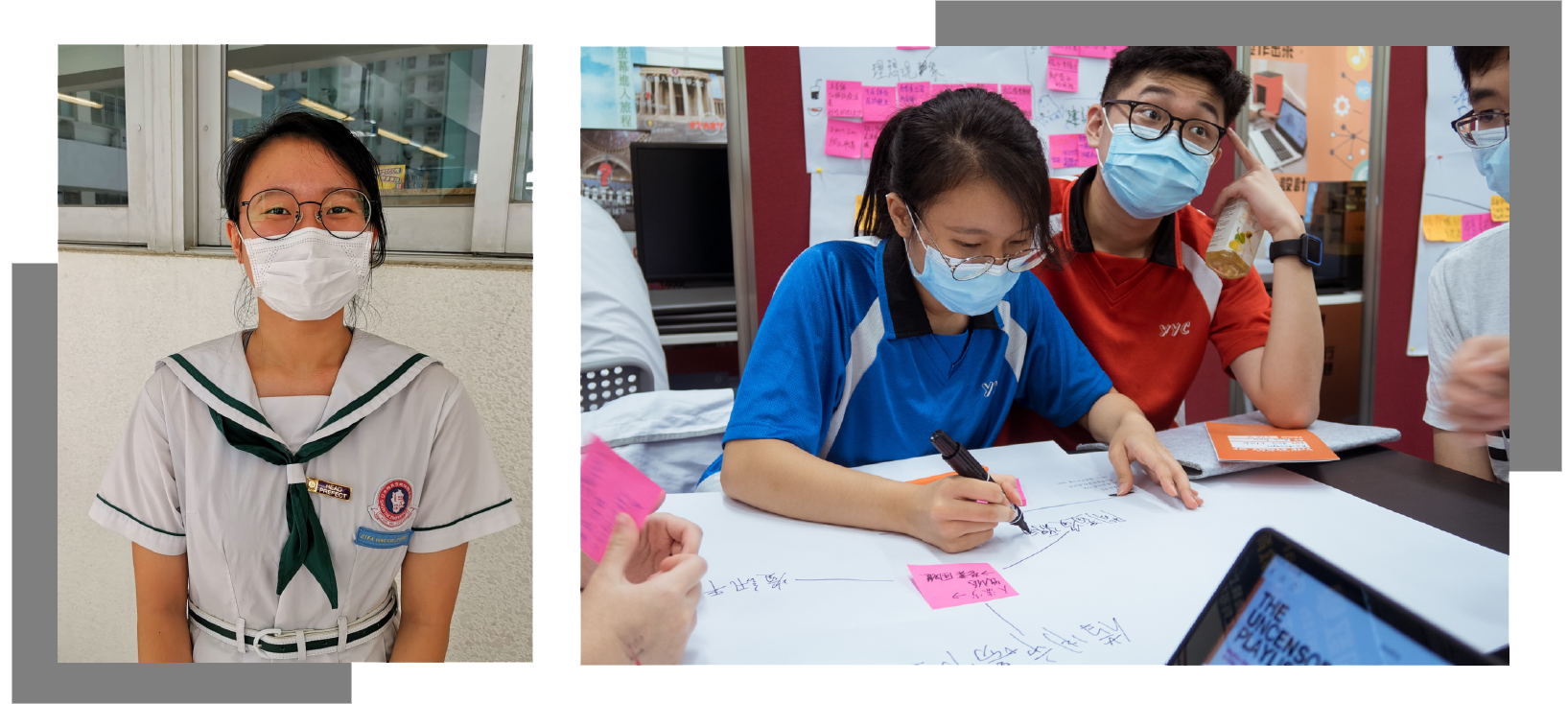
Yuki believes she has learned another way to “design” in the workshop. Yuki realised that in order to design something, it is very important to put many different factors into consideration, every piece of design has its own meaning and requires bold imagination. She had to conduct detailed and systematic communication with her group-mates in the workshop, to discuss the feasibility of their design and whether it can solve the fundamental problem of the community. Yuki has redefined the word “design” in the process.
“Every piece of design has its own meaning and requires bold imagination. I have learned what “design” is once again.”
5B Yuki Wong
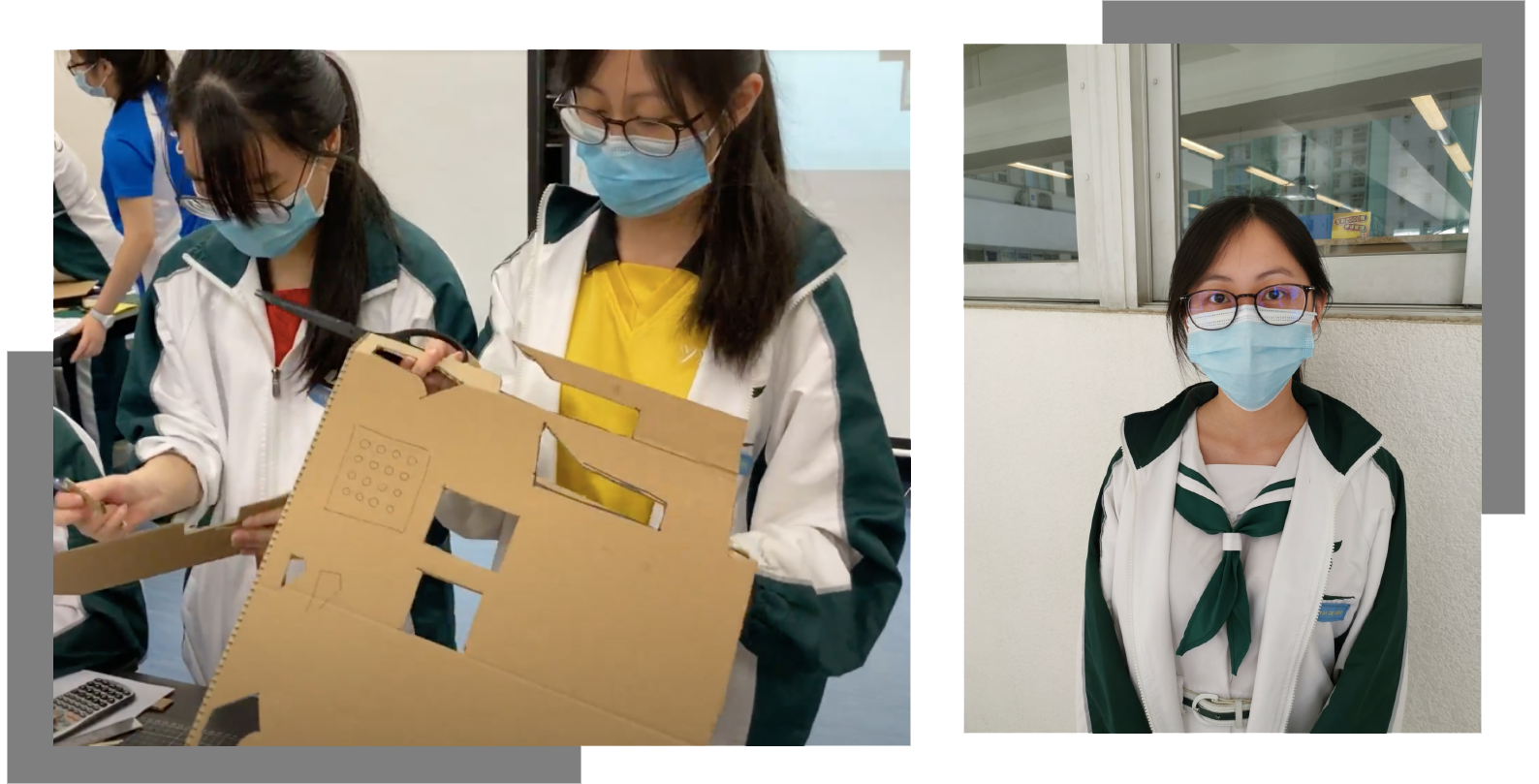
Teacher’s Reflection
“It has been an honour to collaborate with PolyU Jockey Club Design Institute for Social Innovation to introduce “design thinking” into high-school curriculum. I have witnessed the growth of my students in just 19 hours. They had no idea about “design thinking” at the beginning, but now they can use it to solve their own problems. Our students have learned to persist in the face of difficulties, grasp the pain points of potential problems by analysing from multiple perspectives, and consider feasible solutions from a macro perspective. Also, they could understand more of their weaknesses by reflection, and transform “design thinking” into a life skill. As a result, they can bravely confront and overcome all kinds of problems. This activity has broadened their mind and empowered them with positive energy.”
Mr. Yuen Kai-Lun, Assistant Principal
